SolarRegion Freiburg
![]()
"When you come to a fork in the road, take it!", someone once said.
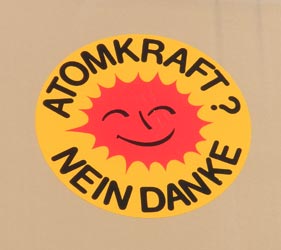
The citizens of Freiburg, in southwest Germany, had such a choice back in the mid 70s when plans to build a nuclear power plant nearby were proposed as the solution to meet the growing demand for energy. Before long people in Freiburg and the surrounding region mounted an effective and successful campaign to halt the construction and made a turn toward solar and other renewable sources and away from fossil fuel and nuclear power.
What began as a protest became a commitment to energy conservation, new energy technology and renewable energy sources. Energy conservation initiatives focused on low energy home designs for all new construction and retrofitting older buildings to reduce energy use. New technology development was led by the Fraunhofer Institute for Solar Energy Systems and Badenova, the local power company. Energy entrepreneurs were encouraged to locate in Freiburg, too. Development of renewable energy sources resulted in solar installations throughout the city and the surrounding villages, construction of a biomass power plant and wind turbines on the mountainside.
While Freiburg has been committed to sustainable energy for thirty years, the rest of the world has slowly come around to the realization that all cities must follow this path. So Freiburg has become a laboratory for best practices.
People come from all over the world to tour the solar sites and learn from the experiences of this determined little city.
We, too, visited the city to see for ourselves. We discovered many installations of water heating and photovoltaic solar panels as well as passive solar homes. We offer the following pictures to give you an idea of the scope and variety of the city's commitment.
The Solar Info Center houses companies from different sectors of the sustainable energy industry under one roof. The Center itself demonstrates many renewable energy and energy efficient elements and the companies benefit from synergies that stimulate creativity and growth.

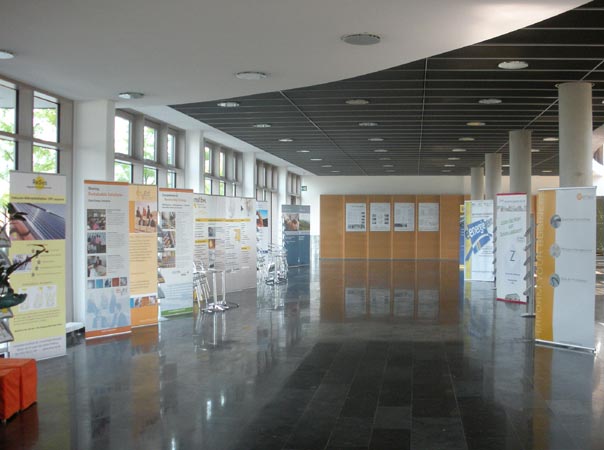
The production facility of Solar Fabrik AG is a demonstration of futuristic solar architecture with its south facing glazed facade that lets the sun shine in reducing the need for electricity for lighting and energy for heating. There are 275 m2 of photovoltaic modules integrated into the facade that together with the additional 300 m2 on the roof and the vegetable oil powered heat/power generating unit provide all the energy requirements of the building!
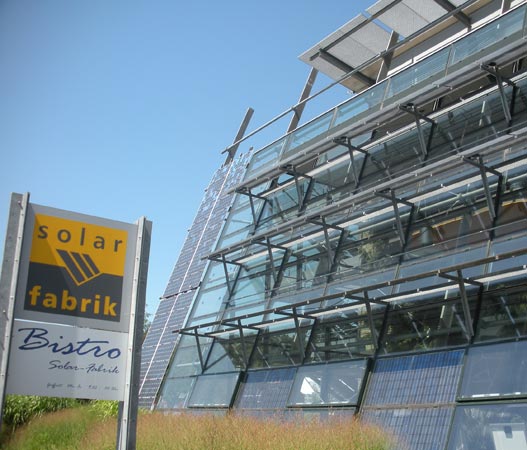
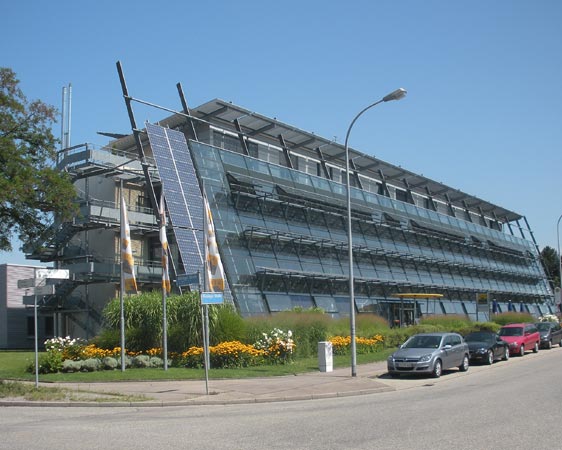
Freiburg's Hauptbanhhof (Main Railway Station) features an office tower with a photovoltaic (PV) array on its south facing facade (top left). The Freiburg Solar House, built in 1992, is the first building in Germany to be supplied entirely by solar energy (top right). Solarzentrum Freiburg is a nearby office and residential building that also generates energy to send to the grid (bottom left). The church of St. Peter and Paul has a photovoltaic installation on the south facing gable of its roof. Part of the income from selling the energy is used to support community kitchens in Lima, Peru (bottom right).
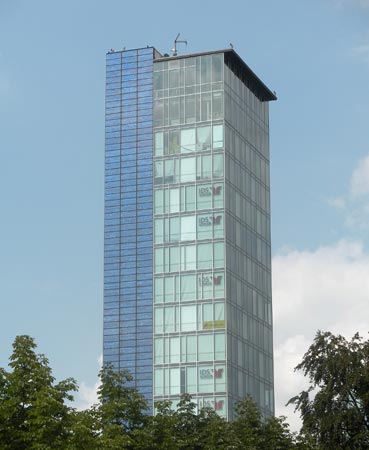
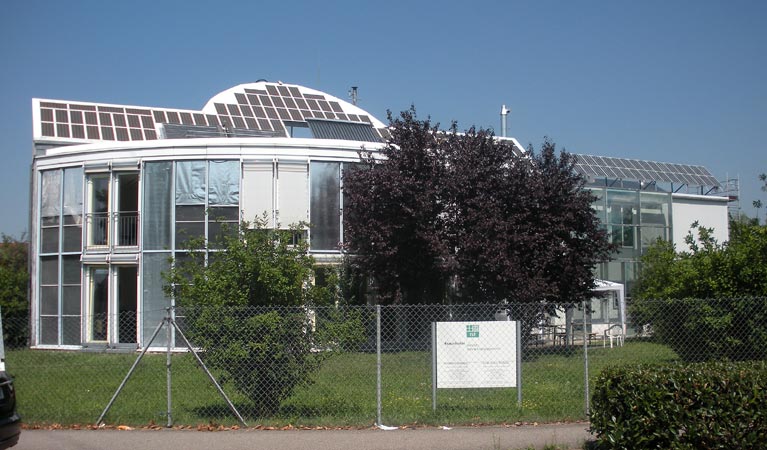
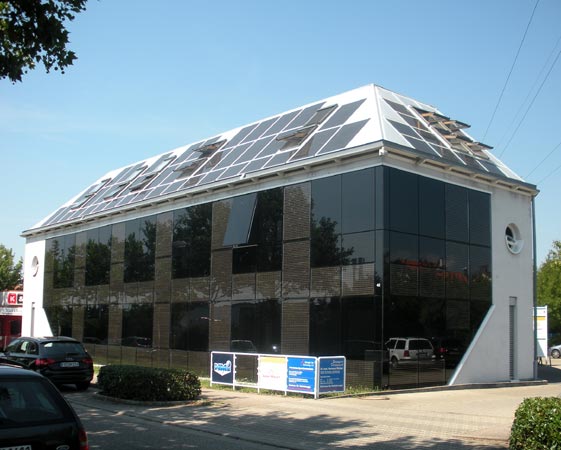
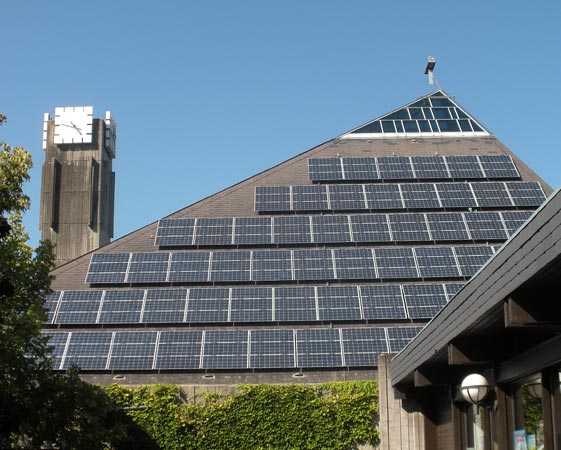
On walks through neighborhoods, we regularly spotted the blue irridescence of PV panels.
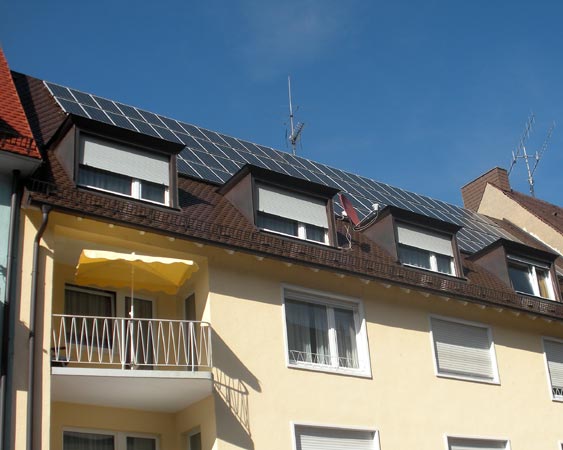
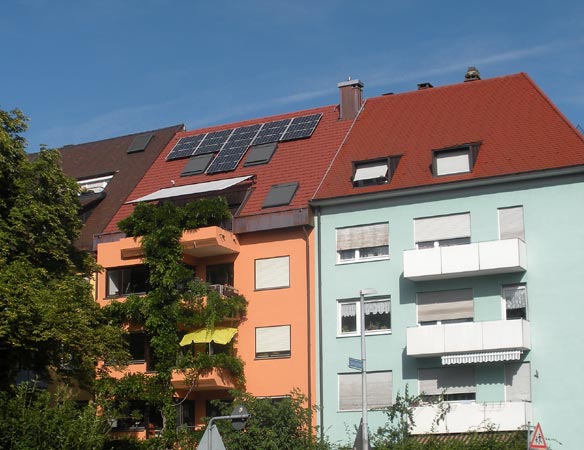
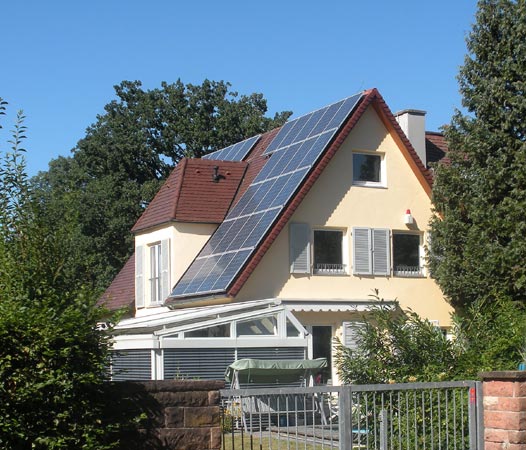
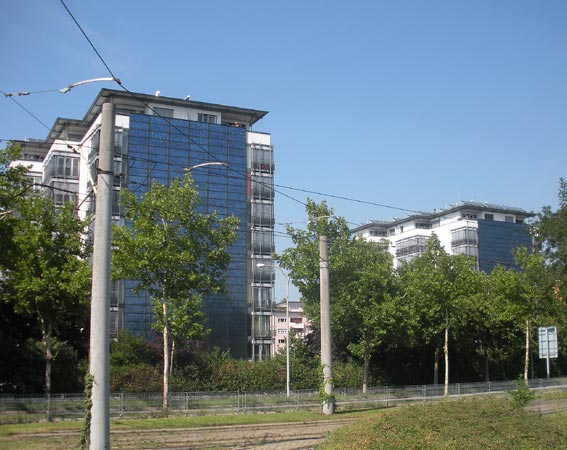
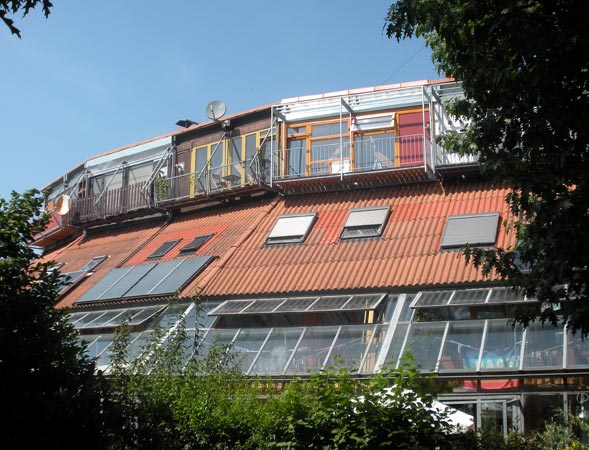
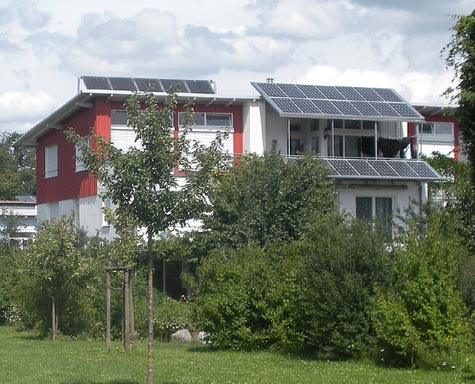
In our visits to some of the charming small towns in the nearby Black Forest, we found even more PV panels.
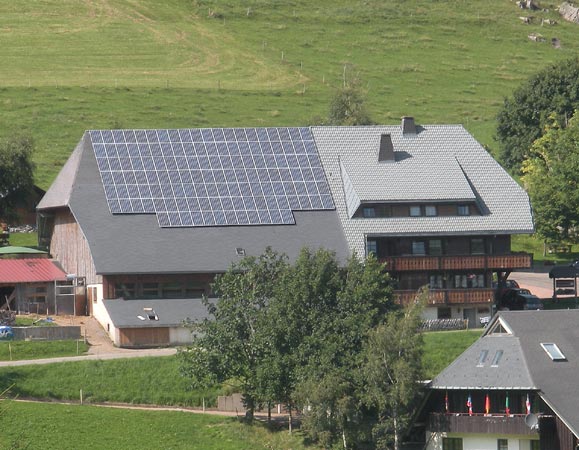
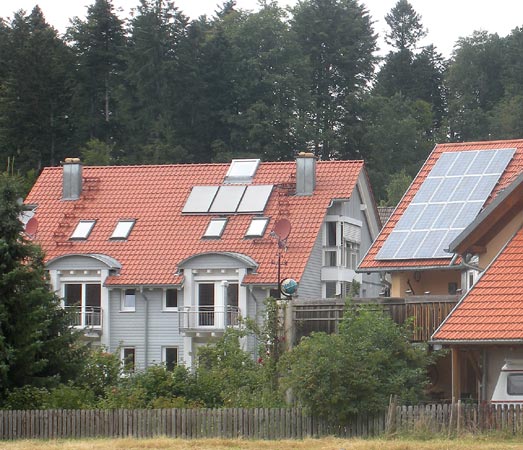
Freiburg Region's commitment to renewable energy development is an essential aspect of a broad based holistic approach to sustainability. The transit system offers mobility options: tram, bus, foot and bike, to enable many Freibergers to just say "No!" to cars.
Vauban, the newest (and perhaps most famous) residential district, is a living demonstration of ideas, options and best practices for living well with a smaller footprint, but that's another story.
Click here to return to Our Return to Europe - Summer 2009 page
![]()